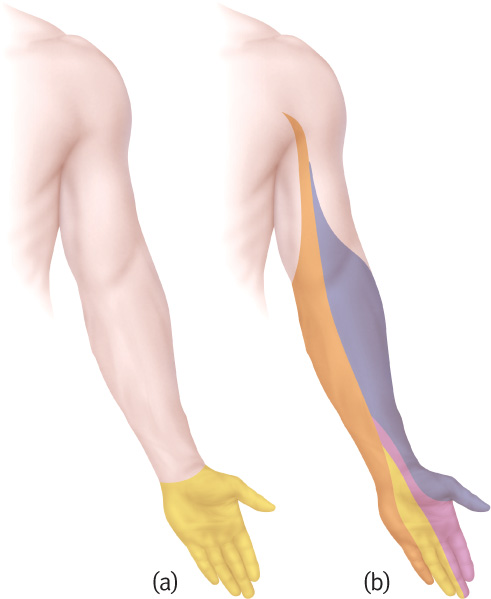
FIGURE 8.2 • Conversion Disorder: Glove Anesthesia Patients who suffer from conversion disorder have sensory or motor symptoms that at first may appear to be neurological but on further investigation do not correspond to true neurological damage. One example is glove anesthesia, in which the person reports that his or her hand—and only the hand—has no sensation, as shown in (a). However, the neural pathways that would create such an anesthesia in the hand would also create a lack of sensation in the arm (b); the color-coded regions show the areas served by different nerves. Thus, conversion disorder may be the appropriate diagnosis when a patient reports glove anesthesia in the absence of anesthesia of the arm.
[Leave] [Close]